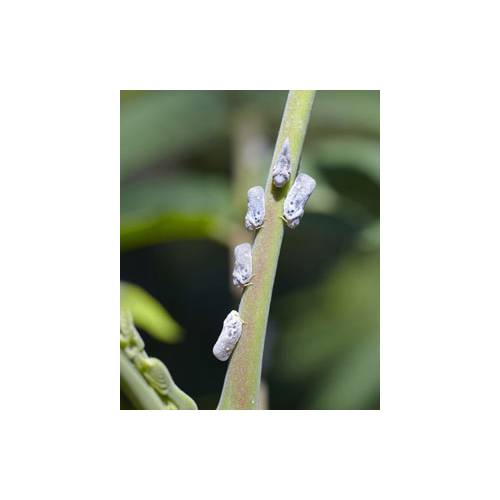
Parasites and insects
Leafhoppers
- Details
-
These insects are the cousins of the cicada, but a little smaller in size. Leafhoppers do not sing but they do cause a lot of damage to plants because they are true biting insects.
The symptoms
Attacked plants see their buds wither away. As soon as you approach the plant, the insects will quickly jump away. You will soon notice that the insects always return to the same plant that they have previously attacked. Their presence on the plant is not due to chance. If you look at them closely, you can notice these insects, sometimes brightly coloured, strung out in a single line along the leaves and the stems, or standing next to each other, one after the other. Just like aphids, the leafhoppers are important carriers of disease that they spread from one plant to another by means of their bites. For example, it is they who are to blame for the blackening of rhododendron buds.
Lifecycle
The eggs will spend the winter on the plant and emerge early in the spring. The leafhoppers will emerge in the larvae state, very agile and they will immediately start to bite the host plant on its most tender parts, that is to say the young buds that are just opening. Bloated, these little beasts will develop very quickly and reach their adult stage by the beginning of the summer. The adult leafhoppers reproduce during the summer and lay their eggs on plants that will in turn become re-infested the following spring.
How to fight them
The fight against leafhoppers is very difficult, because of their great mobility. It is more efficient to try to destroy their eggs in winter by means of a treatment (an emulsion of pulverised oil), in the month of February. During the season, the use of a contact insecticide (containing pyrethrum extract or similar ingredients) will reduce the subsequent number of adult leafhoppers.
How to avoid them
Leafhoppers that have just landed on the plants are practically impossible to avoid. For plants that are especially affected by leafhoppers (rhododendrons, in particular), the best method of prevention is not to grow plants in large numbers that are susceptible to them but to space them out amongst plants that do not attract the leafhoppers.
Good to know
The white leafhopper (Metcalfa) has become very abundant in the gardens of the southwest and around the Mediterranean region in the last few years. This species originating from North America is well established and can become a veritable infestation in some gardens especially on shrubs that are in the shade. Plants that are attacked by the leafhopper lose their vigour. Beekeepers on the other hand do not see this proliferation of leafhoppers as a bad thing as the bees recuperate the honeydew that the insects secrete. They even make a special sort of honey from it, metcalfa honey, which apparently has the aroma of stewed fruit! - Photos (1)

